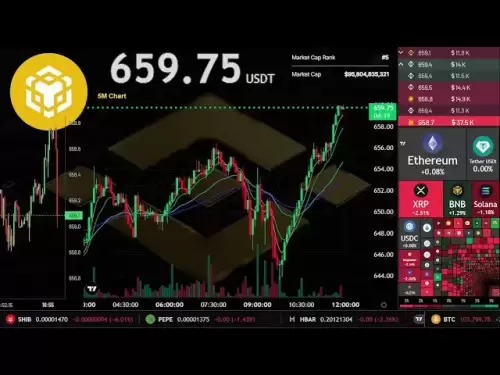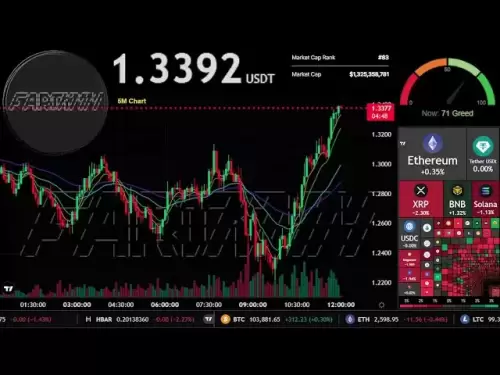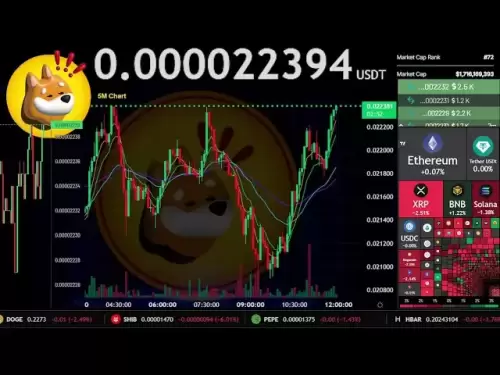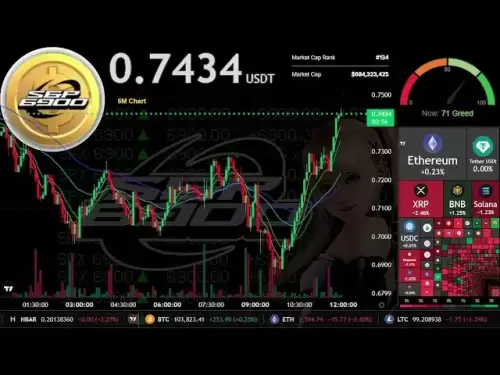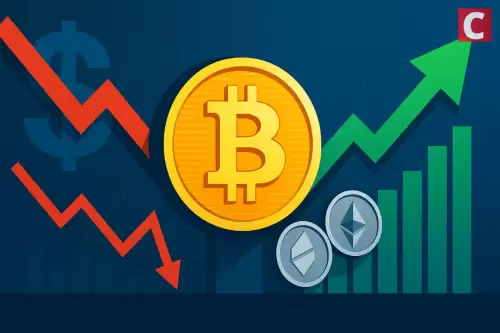 |
|
 |
|
 |
|
 |
|
 |
|
 |
|
 |
|
 |
|
 |
|
 |
|
 |
|
 |
|
 |
|
 |
|
 |
|
Cryptocurrency News Articles
Tata Power share price is testing critical resistance zone after Q4 earnings
May 15, 2025 at 08:02 pm
After rebounding nearly 9% from this month’s low near ₹365, the stock is once again testing the ₹403 level

Tata Power (NS:TATA) shares traded just under ₹398 on Thursday, inching closer to a critical resistance zone that has capped upside since February.
After rebounding nearly 9% from this month’s low near ₹365, the stock is once again testing the ₹403 level—a ceiling that has triggered multiple reversals over the past three months. With fresh Q4 earnings now out, the stage is set for a potential breakout or another rejection.
Q4 Earnings: Profit Surges 25%
Tata Power reported a 25% increase in profit for the March quarter, reaching ₹1,306 crore, compared to ₹1,046 crore in the previous year. Revenue also rose solidly by 8% to arrive at ₹17,238 crore.
While there were no major surprises in the earnings report, the numbers were certainly strong. The company’s performance across generation, distribution, and renewables helped to maintain healthy margins. Additionally, the report highlighted the company’s focus on solar EPC and EV infrastructure.
Despite the earnings release, the market’s response has been minimal, with the stock’s price action remaining muted. However, the technical setup is still biased bullishly if momentum kicks in.
Tata Power Chart Analysis
As the chart shows, the stock has attempted and failed to break above the ₹403 level of resistance several times since February.
If the shares manage to close above ₹403 on decent volume, it could open the door for a move towards ₹420. However, another rejection from the resistance may result in the stock returning to the same chop zone.
The traders will also be keeping an eye on the relative strength index (RSI) technical indicator, which is used by traders to measure the magnitude of price changes to detect overbought or oversold market conditions. The RSI on the 14-day period is now in the mid-30s, which usually signals that a stock has more room to run.
The potential for a breakout or breakdown usually increases when an RSI indicator is approaching extreme levels, which are levels below 30 or above 70.
The potential for a breakout or breakdown increases as the RSI approaches extreme levels, which are levels below 30 or above 70.
The lower boundary of the chop zone is at the 200-day simple moving average, which is a technical indicator used to determine the long-term bullish or bearish trend of a stock or other asset. The 200-day SMA is typically employed by traders who hold stocks for a longer period of time, such as several months or more.
Over the past few months, the 200-day SMA has acted as a floor for the stock price, which could be a positive technical signal for the bulls.
The 200-day SMA is now at ₹340, which is a crucial level for the bears. If the stock price falls below this level, it could signal a reversal of the long-term bullish trend.
The next support level is at the 50-day SMA, which is used to determine the medium-term bullish or bearish trend of a stock. The 50-day SMA is typically employed by traders who hold stocks for a shorter period of time, such as a few weeks or months.
The 50-day SMA is currently at ₹365, which is the lowest level since November 2022.
If the stock price falls below this level, it could signal a reversal of the medium-term bullish trend.
The next support level is at the 100-day SMA, which is also used to determine the medium-term bullish or bearish trend of a stock. The 100-day SMA is typically employed by traders who hold stocks for a shorter period of time, such as a few weeks or months.
The 100-day SMA is currently at ₹370, which is the lowest level since October 2022.
If the stock price falls below this level, it could signal a reversal of the medium-term bullish trend.
The next support level is at the 200-week simple moving average, which is a technical indicator used to determine the very long-term bullish or bearish trend of a stock or other asset. The 200-week SMA is typically employed by traders who hold stocks for a very long period of time, such as several years or more.
The 200-week SMA is now at ₹330, which is a crucial level for the bears. If the stock price falls below this level, it could signal a reversal of the very long-term bullish trend.
The potential for a breakout or breakdown usually increases as the RSI approaches
Disclaimer:info@kdj.com
The information provided is not trading advice. kdj.com does not assume any responsibility for any investments made based on the information provided in this article. Cryptocurrencies are highly volatile and it is highly recommended that you invest with caution after thorough research!
If you believe that the content used on this website infringes your copyright, please contact us immediately (info@kdj.com) and we will delete it promptly.
-

-

-

-

-

-

-

-

-

- Ameer Cajee was arrested in Switzerland in 2021 on suspicion of money laundering while trying to access safety deposit boxes they rented in Zurich
- May 16, 2025 at 02:00 am
- It was Ameer Cajee who was arrested in Switzerland in 2021 on suspicion of money laundering while trying to access safety deposit boxes they rented in Zurich



















